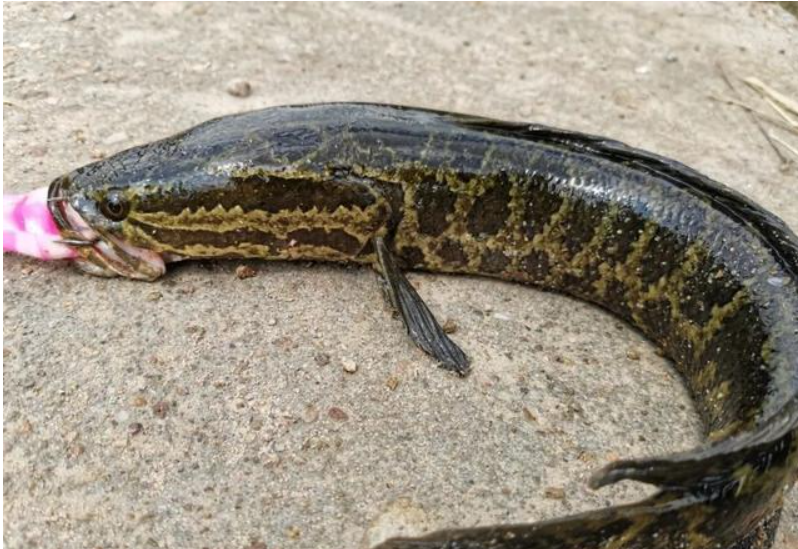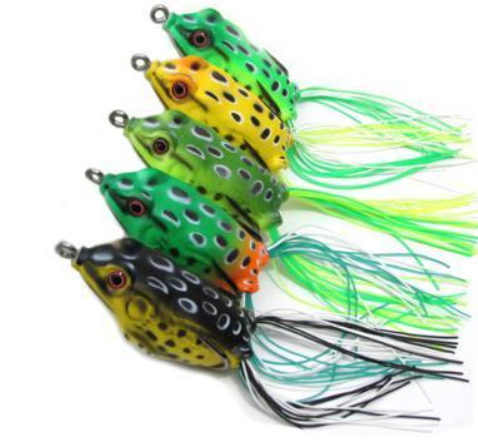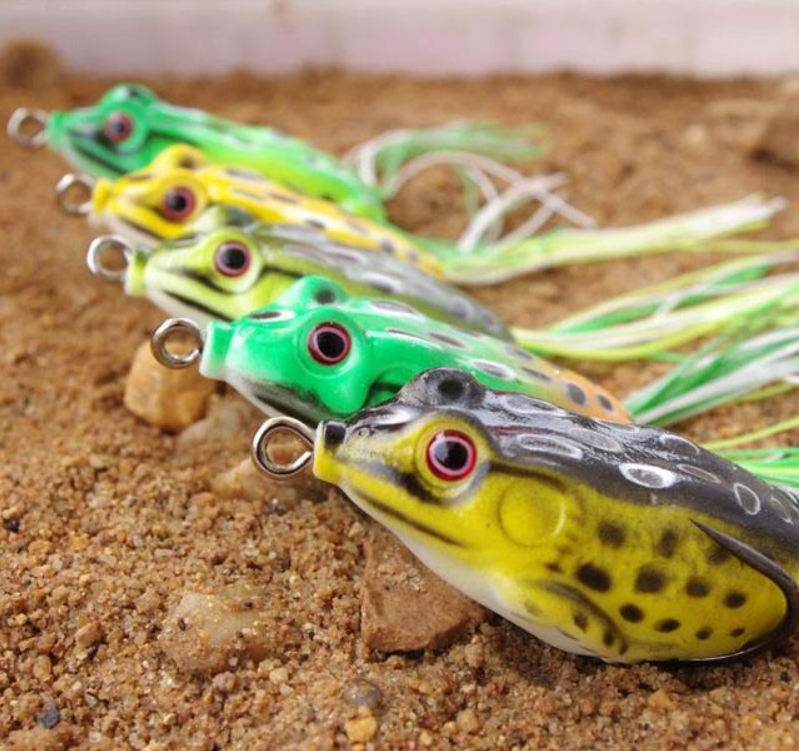It is strong and robust, with a snake-like appearance. At first glance, it looks very intimidating, with a slippery body covered in mucus and rows of terrifying teeth. This fish is particularly famous for its aggressive nature—it is the protagonist of this article, the black snakehead, also known as the snakehead fish in some regions.
The snakehead fish is highly aggressive and never easily gives up on food that comes into sight. It attacks with remarkable speed, often striking before its presence is even noticed, leaving its prey as a meal in its mouth.

The snakehead fish is most active in summer and autumn. During winter, it burrows into the mud to hibernate. When temperatures rise in spring and the water reaches a suitable warmth, it emerges from the mud and moves to the upper layers of the water to bask in the sun.

Why does the snakehead fish seem to favor silicone? It not only preys on small fish and other aquatic creatures like loaches, but it also frequently attacks amphibians such as frogs. Because of its fondness for frogs, clever humans came up with an idea: using artificial frogs to catch snakehead fish. These fake frogs are made of soft silicone, which not only looks remarkably like a real frog but can also mimic frog-like movements, such as hopping and swimming, through skillful manipulation by anglers.

When the technique for using a frog lure is executed with finesse, it can achieve a level of realism that deceives even real frogs. Have you ever experienced this amusing situation? While using a frog lure to target snakehead fish, I have encountered real frogs chasing after the artificial one on two occasions. As the rod tip is twitched, the lure imitates the hopping of a live frog, attracting real frogs to pursue it. If the rod is not manipulated further, the next moment, the real frog might jump onto the fake one. I often yank the rod forcefully at that instant, sending the real frog flying into the air. I find this particularly entertaining and enjoyable.